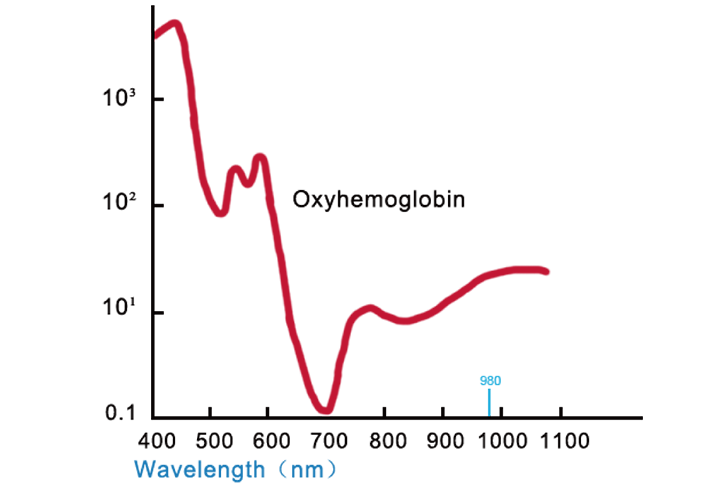980nm & 1470nm Diode Lasers
98nm & 1470nm diode lasers produce a coherent projection of light in the visible to infrared range. What sets the 980 & 1470nm wavelengths apart is their unique absorption characteristics, which make them ideal for a myriad of medical applications.
980nm & 1470nm wavelengths are highly absorbed by water and hemoglobin, making them perfect for targeting vascular lesions. The 980 nm laser is known for its efficacy in coagulating blood within the vein, while the 1470 nm wavelength is primarily absorbed by water in the tissue, leading to less bruising and a more comfortable patient experience.
980nm & 1470nm Diode Laser Technology for Spider Veins and Varicose Veins
Spider veins and varicose veins are common venous disorders that affect cosmetic appearance. Spider veins, or telangiectasias, are small, dilated blood vessels visible near the surface of the skin, often appearing as red or blue lines. Varicose veins are larger, and more pronounced, and can cause discomfort and swelling.
The 980 & 1470nm diode laser technology has revolutionized the approach to treating these venous conditions. These wavelengths were chosen specifically for their absorption characteristics; 980nm is preferentially absorbed by hemoglobin, and 1470nm by water in the blood vessel wall. The development of diode lasers that operate at these wavelengths allows practitioners to deliver targeted energy to the veins, resulting in effective treatment with minimal side effects.
How Does A 980nm &1470nm Diode Laser Work?
The working principle of 980 & 1470nm diode lasers in treating spider and varicose veins involves selective photothermolysis.
980nm Diode Lasers: This wavelength targets the hemoglobin within the blood vessels. The laser energy is absorbed by the hemoglobin, which heats up and causes the blood within the vein to coagulate. This coagulation leads to the collapse and sealing of the vein. The body then naturally re-routes the blood through healthier veins, and the treated vein is eventually reabsorbed.
1470nm Diode Lasers: This wavelength is absorbed primarily by water in the vein wall. The energy emitted by the laser heats up the water content, leading to a thermal effect that causes the vein walls to shrink and close. This method is particularly effective for treating larger varicose veins as it directly affects the structure of the vein without relying solely on blood coagulation.
The combination of these two wavelengths in a single treatment allows for a comprehensive approach to treating both superficial spider veins and deeper varicose veins.

Technology Advantages of 980nm & 1470nm Diode Lasers for Spider Veins and Varicose Veins
The use of 980nm & 1470nm diode lasers for treating spider veins and varicose veins comes with several technological advantages:
Selective Targeting
The 980nm & 1470nm wavelengths are selected for their ability to target specific components within the vein, leading to precise treatments with minimal risk of damaging surrounding tissue.
High Absorption Rates
The 980nm wavelength’s high absorption by hemoglobin and the 1470nm wavelength’s by water ensure efficient use of laser energy for vein collapse.
Less Pain and Downtime
Spider veins & varicose veins Treatments with 980nm & 1470nm diode lasers are less painful compared to traditional surgical methods, and patients can typically return to normal activities much sooner.
Reduced Side Effects
The precision of diode laser treatment minimizes side effects such as bruising, scarring, and skin pigmentation changes.
Versatile Treatment
The ability to adjust settings for both wavelength and pulse duration allows for spider veins and varicose veins treatments to be tailored to the size and depth of the vein, enhancing varicose veins treatment results.
Cost-Effective
Diode laser spider veins & varicose veins treatments can often be performed quicker and with fewer sessions than other treatments, offering a cost-effective solution for patients.
